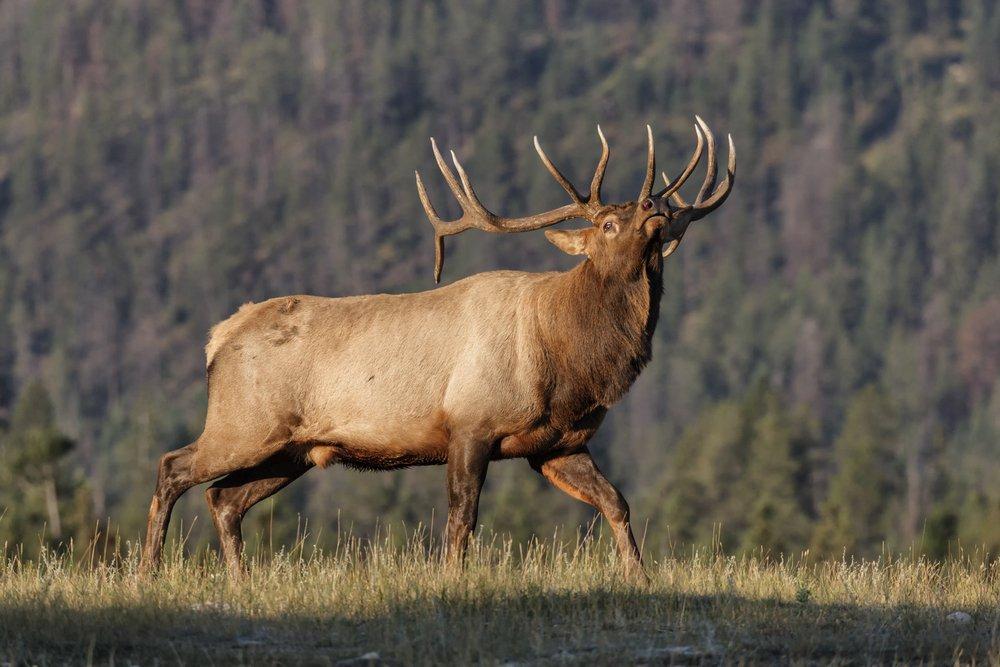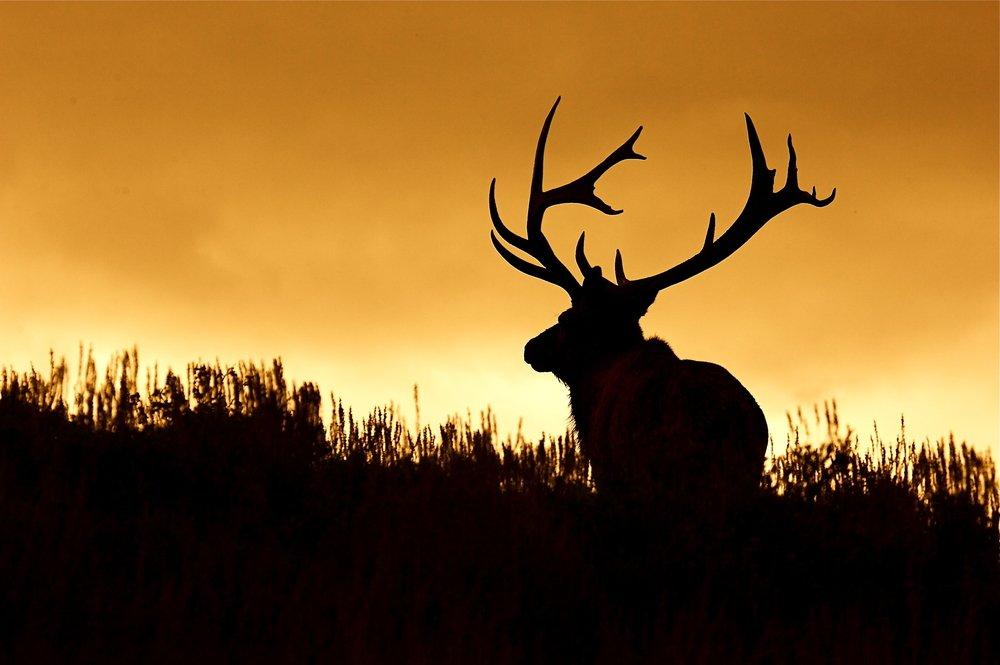Do You Already Do These Things?
Big game hunting is hard. Big game hunting with a bow is even tougher. Here are 10 tips to help you prepare for next season. It's a starting point, and up to you to take it from here.
1. What to Glass For
Stalking western big game is hunting's greatest challenge. Generally the biggest stumbling block is seeing animals before they see you. Use visual clues to separate game animals from disguising cover. Look for shiny spots that can be a wet nose, patch of hide, or antler beam. Learn to recognize the horizontal outline of a back against the typically vertical lines of tree trunks. Movement is most often the biggest tip-off of all: a shifting leg, flickering ear or tail, or turning head -- even if just the tiniest twitch. After detecting any of these clues and suspecting game, use binoculars to gain a positive identity before dismissing it and moving on. Occasionally, squat low to gain a different perspective, to see beneath cover. Western game animals have sharp eyesight, but taking your time and using binoculars can give you the needed edge.
2. Still-Hunting Primer
Sitting on an exposed vantage and glassing for hours on a cold, windy morning can be torture, especially when it's wet. Too, hot days can keep game thoroughly hidden. On these slow days, still-hunting thick cover where animals hole up can be both productive and more comfortable. Still-hunting is more than moving through the woods slowly and quietly, it's a complete mental state. The effective still-hunter learns to not only move stealthily and silently but also to see and hear everything. To assure this happens, stop every five or six steps and scan your surroundings thoroughly, using binoculars when necessary. Look for small flickers of movement -- the curve of an antler, the horizontal outline of a back against vertical trees, etc. -- before moving on. Still-hunting keeps you in the game when weather or cover is against you.
Don't Miss: 15 Places Big Bucks Bed That Deer Hunters Should Hunt
3. Learn Body Language
Heeding big game body language can make you a more successful bowhunter. Physical clues tell you when to make your move or draw your bow, when to hold tight or wait for a better shot. Animals with pinned ears, swishing tails, or moving stiffly have likely detected you and are apt to flee at the first detection of danger. Hold tight and allow that animal to settle. Animals swiveling their ears, stomping, twitching or raising their tails, or moving erratically also make poor targets. These are clues to hold off or proceed with extreme caution. A calm deer feeding or milling will most often flick its tail just before moving forward, a clue to wait before releasing or risk a misplaced shot. A relaxed deer assures a clean shot, so pay close attention to what an animal is telling you the next time you take a shot, and success is practically assured.
4. Learn Sign Language
While scouting, there is sign, and then there's sign. Western big game animals leave plenty of it behind in their daily lives. The key is to separate sign that's important to you today, or in the coming week, from that which is no longer useful. This means determining exactly how fresh the sign you encounter is. Chasing sign that was made weeks ago doesn't help you fill your tag today. Elk in particular can move miles in a single night. Use logic when inspecting sign, especially in places like mud, where tracks remain sharp for long periods. The surest sign of all are droppings. Moist, even wet, droppings are surefire evidence game is still in the area. Elk rubs with dry, crispy edges are likewise not useful, while fresh-dripping sap is. By hunting areas that show recent movements, you avoid wasting time and energy on unproductive sites.
Don't Miss: How to Elk Hunt on a Budget
5. Don't Make Eye Contact
Seeing a behemoth muley buck sauntering within bow range, or a monstrous bull elk responding to your bugles, coming at you intent on blood, can be mentally overwhelming. Many bowhunters have become so mesmerized they actually shoot their arrow into the very antlers they so covet. Assure this doesn't happen to you. Once decided that you'll shoot, never look at that animal's antlers again. Instead, concentrate on picking a shooting spot and never take your eyes off of that single point. Some old trophies are quite sensitive to being observed closely at point-blank range, so averting your gaze away from the animal's eyes can mean the difference between receiving a shot and diverting him from your position. In archery, your arrow goes where you look. Look where you want to hit, not at those antlers.
6. The Right Time to Draw
Arriving within reasonable range of a big-game animal while bowhunting is only half the battle -- choosing the best time to draw your bow, emerge from cover, and shoot is the other half. Proper shot timing most often spells the difference between success and failure, as the wrong move can give you away and send your quarry fleeing. When possible, allow an animal's head to pass behind screening brush, a rock, or tree trunk before making your move. On open ground, allow the animal to pass your position, taking a quartering-away shot when the animal's attention is directed forward. To take a shot at game looking you over increases the odds of a jumped string and a wounded animal. Proper shot timing means taking shots at only game that has no idea you exist, increasing your odds of making a clean and humane hit.
Don't Miss: 7 Elk Hunting Tips from Real-Life Elk Hunters
7. Aim Small, Miss Small
"Pick a spot." This is a common mantra in hunting. But what does it really mean? It's a matter of concentration. Mel Gibson said it best in the movie "The Patriot": "Aim small, miss small." Try this during shooting practice: Place a clean paper plate on the target butt. Step back to a comfortable range and shoot a three-shot group. Notice how shots often stray away from the middle, or even hit outside its edges? Now add a small ink spot to the center of the plate and try again. Shots will likely group closely around that dot, all staying on the paper. Apply this principal while shooting at game as well, by picking the smallest spot discernible on a big game animal's side -- a mussed tuft of hair on a deer, a spot of mud on a bull elk -- and aiming only at that spot. You might still miss your aiming point, but you'll also likely tag your game.
8. Stop a Buck for a Shot
It is a dilemma faced by western big game hunters every year: A deer, bear or elk passes your position on the move and a tough decision must be made. Moving shots, no matter your weapon, present a low-odds proposition for any hunter and should generally be avoided. The trick is to get that animal to stop for a standing shot without also spooking him. A simple mouth grunt or doe bleat is often just the ticket for these kinds of situations. While following the quarry with your sights or scope, wait for the animal to pass into a shooting lane, then produce your call. More often than not, the animal will stop for a clean shot. A standing shot is always more desirable than a moving one.
Don't Miss: Are Mule Deer Getting the Boot from Whitetails?
9. Know Your Effective Range
What's your effective range on big game? Forty, even 50 yards with bow? Let's find out. Use a string-and-pencil protractor to create a cardboard circle of desired diameter -- 8 inches for pronghorn, 10 inches for mule deer, 20 inches for bull elk. Shoot five shots at that circle from a range you feel comfortable. Back off 10 yards and try again. When you begin struggling to place all five shots in the circle, you shouldn't be shooting at game beyond that range. Now add factors such as heavy clothing, cold and stiffness after a long wait, panting lungs after a long climb, and sure excitement when that big buck arrives within range. These are elements that can quickly erode that maximum range. Learn your effective range and use the discipline necessary to stay well within your abilities.
10. Become a Better Tracker
When tracking big game after a hit, especially under tough conditions like unexpected moisture, across hard ground, or in thick vegetation, never give up on blood, even if that means crawling 100 yards to find the next spec. This blood is the only sure link to your animal. A wounded animal can take many twists and turns in its escape and there is no way to anticipate where that animal may go. Track with a friend, take turns on the trail to keep eyes fresh. Mark each spec of blood well to assure you can come back to it, investigating all possible travel routes from that point. You should begin circling or ranging in the search of your animal only after all other possibilities have been exhausted. The fat lady doesn't sing when wounded game is the issue.
Don't Miss: The Top States for Record Mule Deer in the Last 10 Years
Are you a big game hunter wanting to learn how to accomplish your goals? Check out our stories, videos and hard-hitting how-to's on big game hunting.









